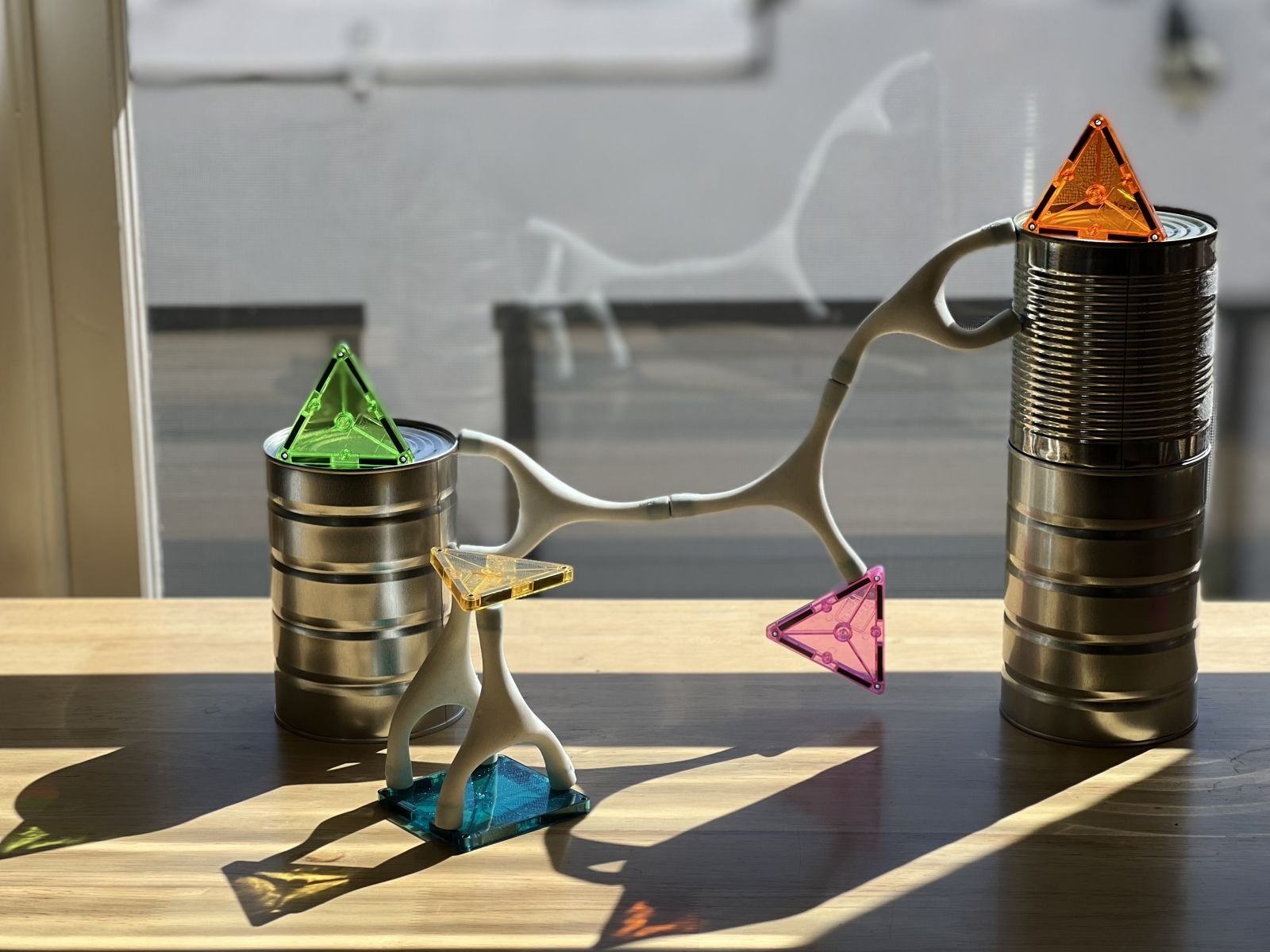Materials Spotlight: Magnets
My upcoming book, The Tinkering Workshop contains twenty spotlights on materials for everyday elements that can be used for playful explorations of art, science and technology. There were plenty of items that we couldn’t fit it into the final version of the book so as a little bit of “bonus content”, I wanted to write a few blog posts featuring tinkering materials that didn’t quite make the cut.
In this installment of the series, I would like to focus on magnets of all sorts. Like many of the materials featured in the book, there are many different types ranging from tiny neodymium magnets to ceramic donut magnets to huge radar magnets like the kind used in the classic science center exhibit. I hadn’t thought about magnets as a core tinkering material but as I reflected a bit more there were so many examples of projects that came to mind.
The reason that I started thinking about magnets as a “bonus” tinkering material was this on-the-go switch for a little motorized car that Thomas showed me at a recent prototyping session with Tinkertank. I’m excited about how this design uses both the magnetic and conductive properties of the materials.
To make a version of this car attach a battery pack and wheels to a yellow hobby motor using hot glue or tape. Add a heavy duty bolt (made of stainless steel) to the top of the construction. Cover half of the head of the bolt with normal gaffer’s tape. Then use conductive fabric tape to connect one wire from the battery to the un-taped half of the bolt and one wire from the motor to the taped half of the bolt. Then twist together the remaining wires from the motor and the battery pack. Find a way to send the magnet down a ramp and off a ledge so that it connects to the bolt and activates the switch. I’m really interested in how this design might be used in future chain reaction machine projects.
Another interesting way to use magnets comes from the Tinkering Studio team who combines magnatile pieces and other commercial magnet toys with recycled materials to build a custom construction kit. I’m really inspired by the examples made by Steph Muscat, that were built on the ideas of Casey Federico, show some of the ways that magnets might be integrated into construction kits to create beautiful and organic results.
Another prototype that made heavy use of magnets is the motorized music machines. In this activity, learners tinker with a set of open-ended materials and mechanisms to create sound patterns. By adding and taking away pegs from a motorized pinwheel and arranging instruments on a magnetic surface that keeps everything precisely in place, participants create regular beats and unusual patterns.
For this project, magnets were used as a way to promote quick iteration with the pegs that snapped into place on the wheels. As well, magnets on the bottom of the pieces also kept everything in place so that the soundscapes could stay consistent as learners added and took away parts of the system.
Magnets are not the most common addition to automata, but these two examples by the amazing artist Paul Spooner of Cabaret Mechanical Theatre that show some intriguing possibilities for integrating magnetic phenomenon. There’s a bit of magic in the way that these simple mechanisms get transformed by the addition of the magnet to move an element of the story.
And one final tinkering example that uses electromagnetism to make art/science sculptures are homopolar motors. To make one of these spinners, start by attaching a couple of neodymium magnets to the bottom of a normal double AA battery. You can also make the magnets stick to a flat head screw in a piece of scrap wood to give you a bit more leeway for the spinner hitting the table surface.
Twist a piece of copper wire so that one end balances on the little bump on the positive side of the battery and the other end touches the side of the magnet. It may take a bit of trial and error but when you have everything in balance the wire should spin due to the force produced by the combination of electricity and magnetism.
There are many variations to the designs and you can also add in plenty of other everyday materials like feathers, googly eyes or fabric scraps.
These are just a few of the endless possibilities for using magnets in your tinkering projects. I’m curious what other ways the larger making and tinkering community might imagine using this material in tinkering projects. Stay tuned for the next blog posts featuring more “bonus content” material spotlight all in anticipation of The Tinkering Workshop book coming out on October 15th.













